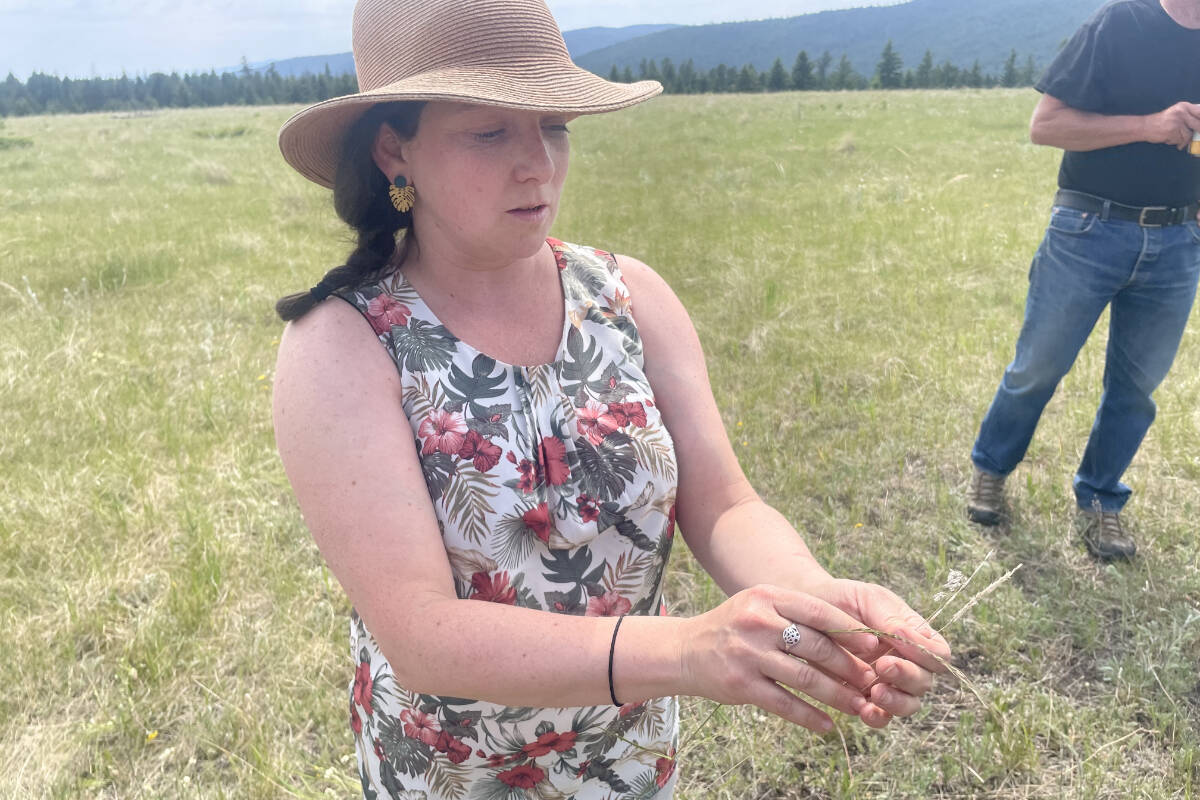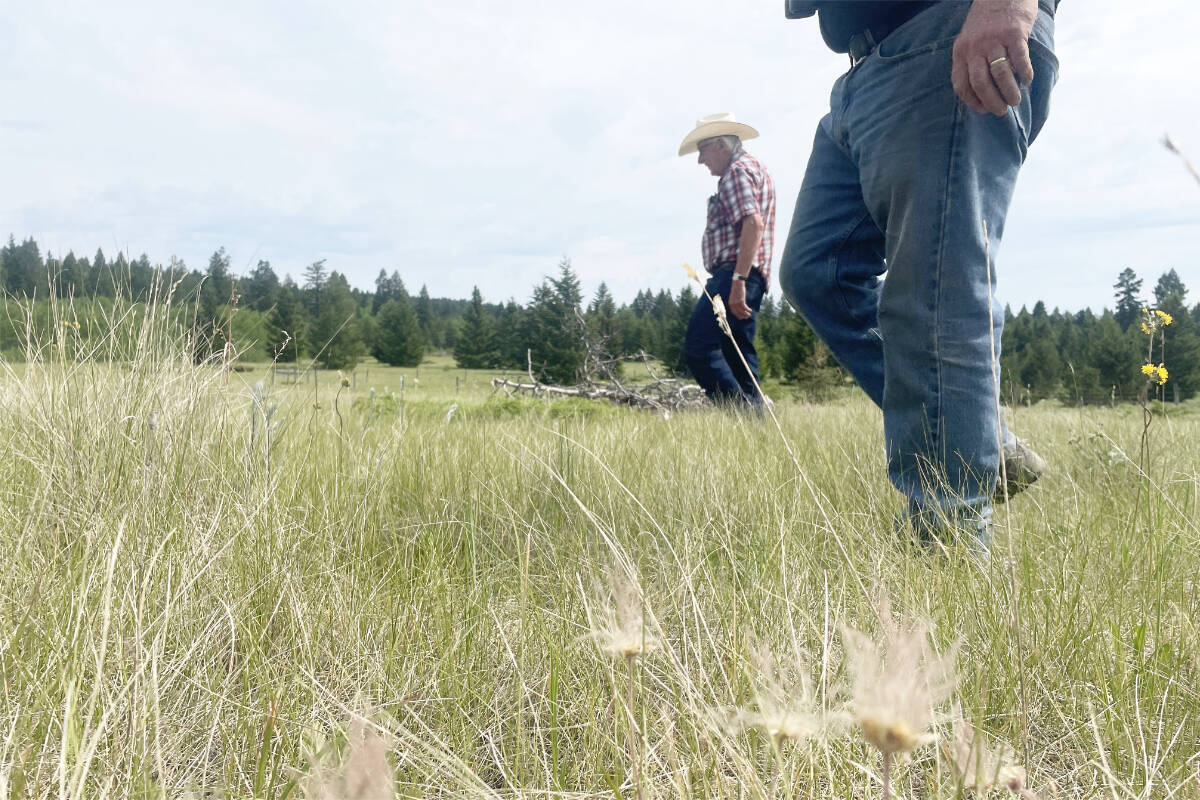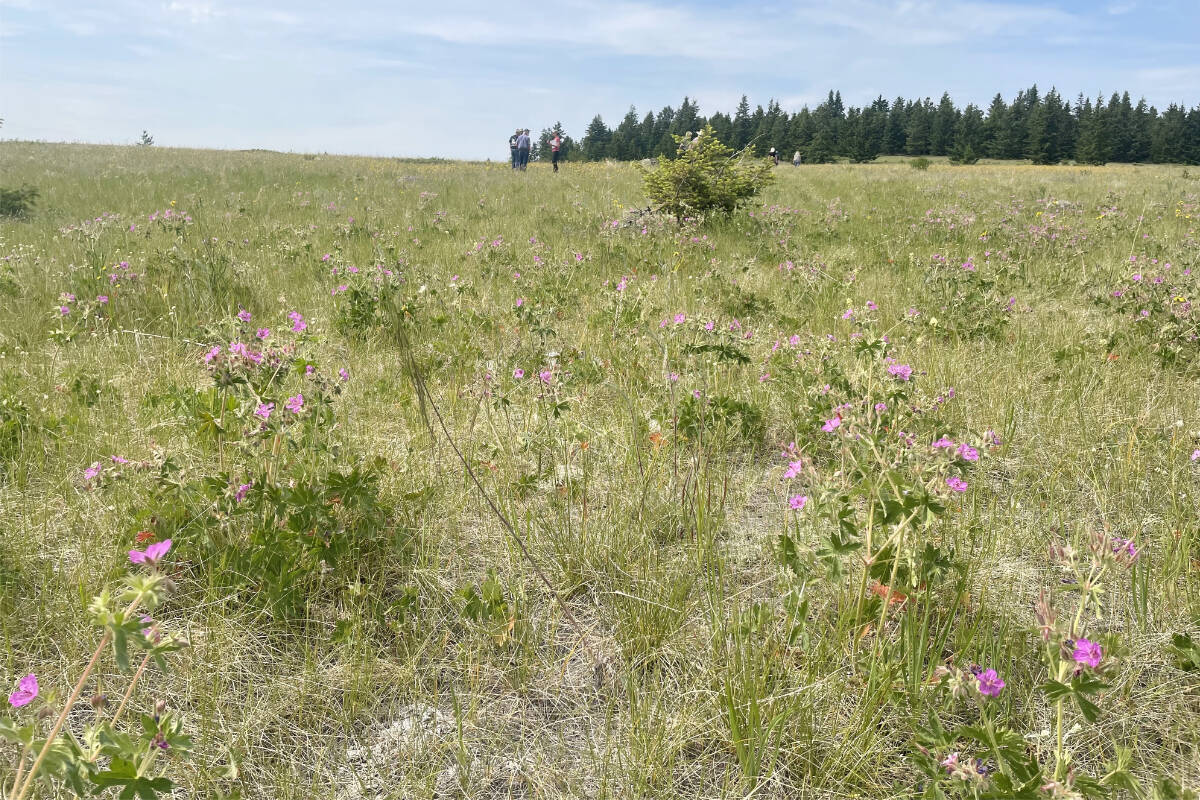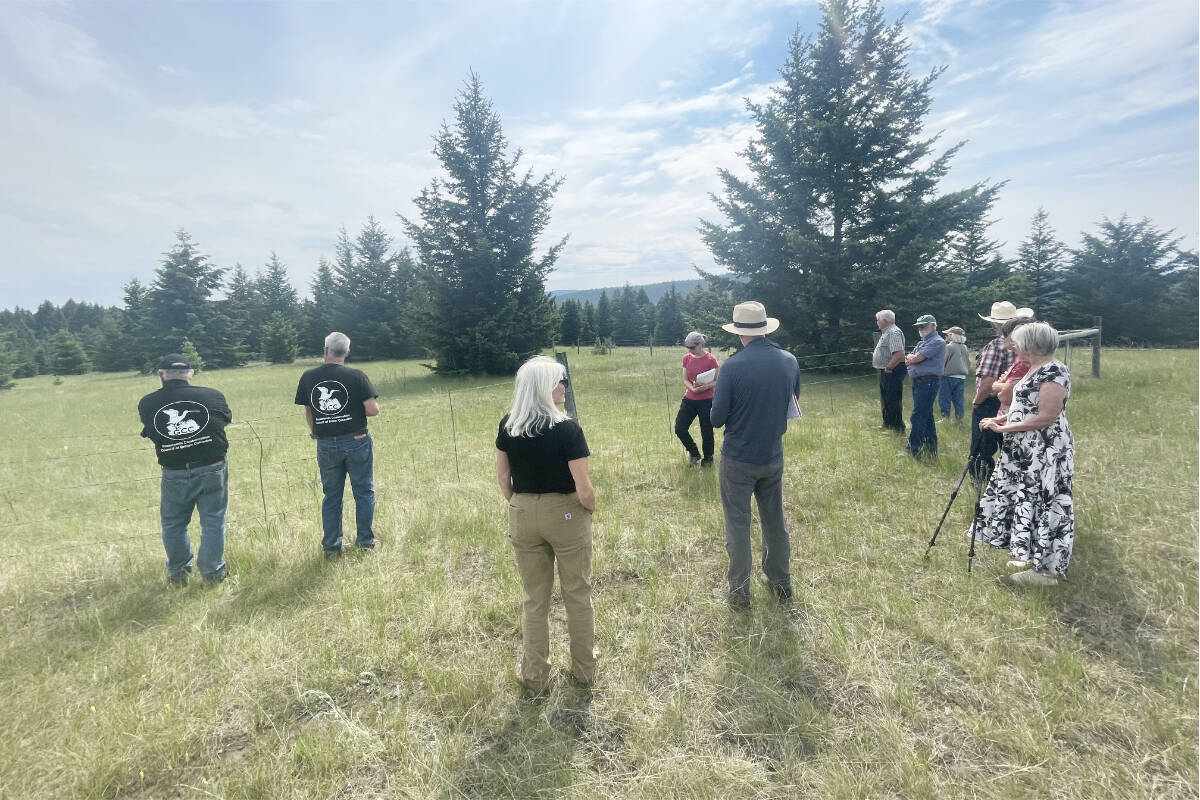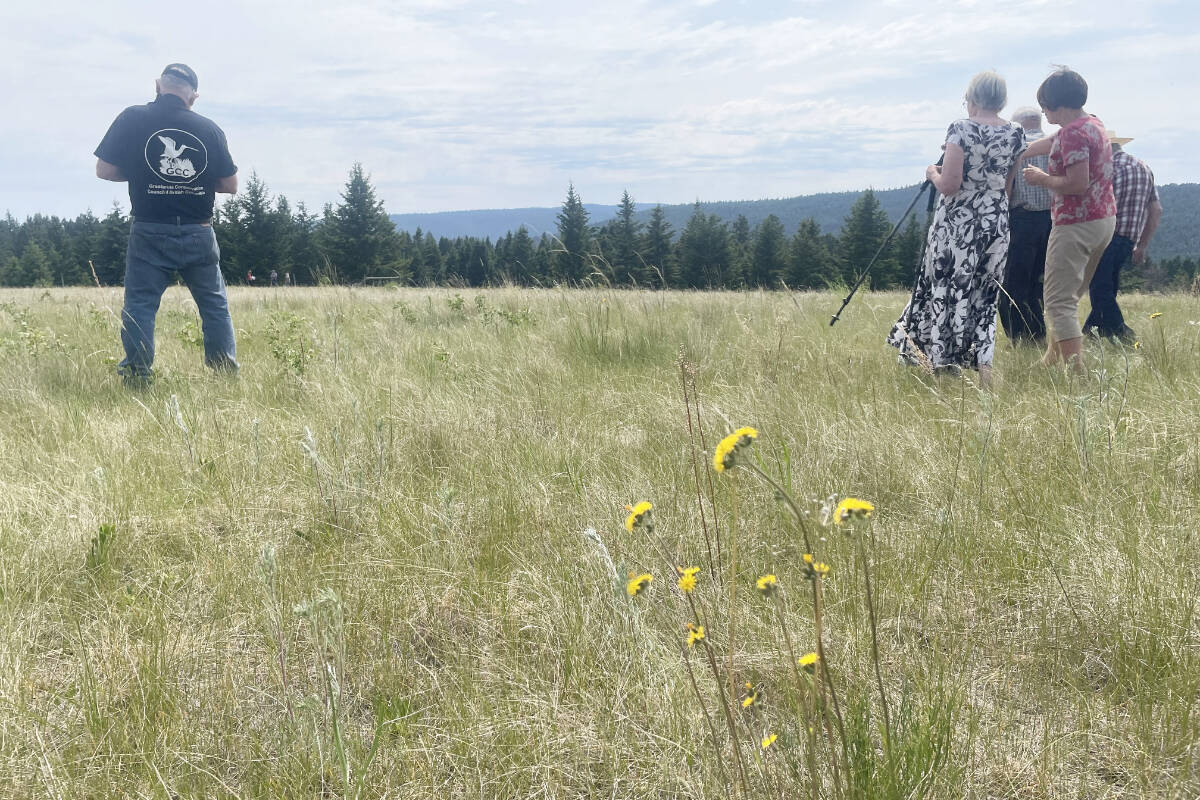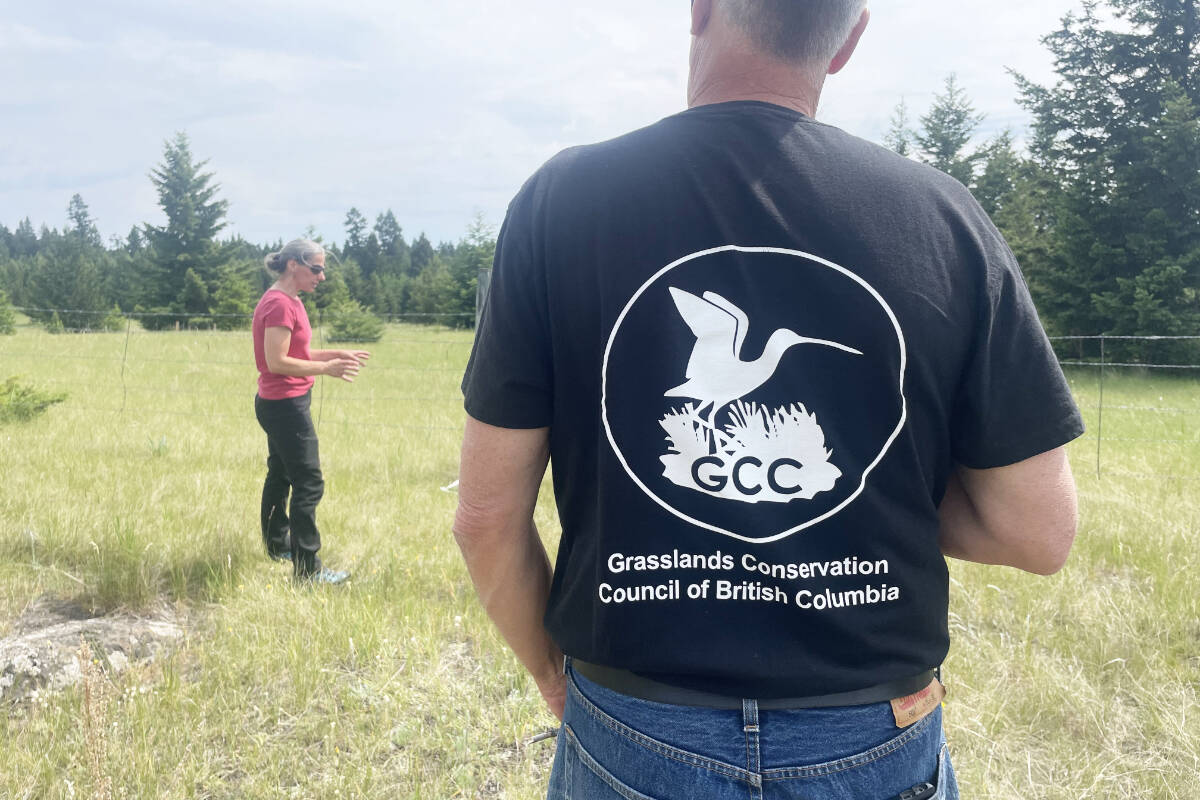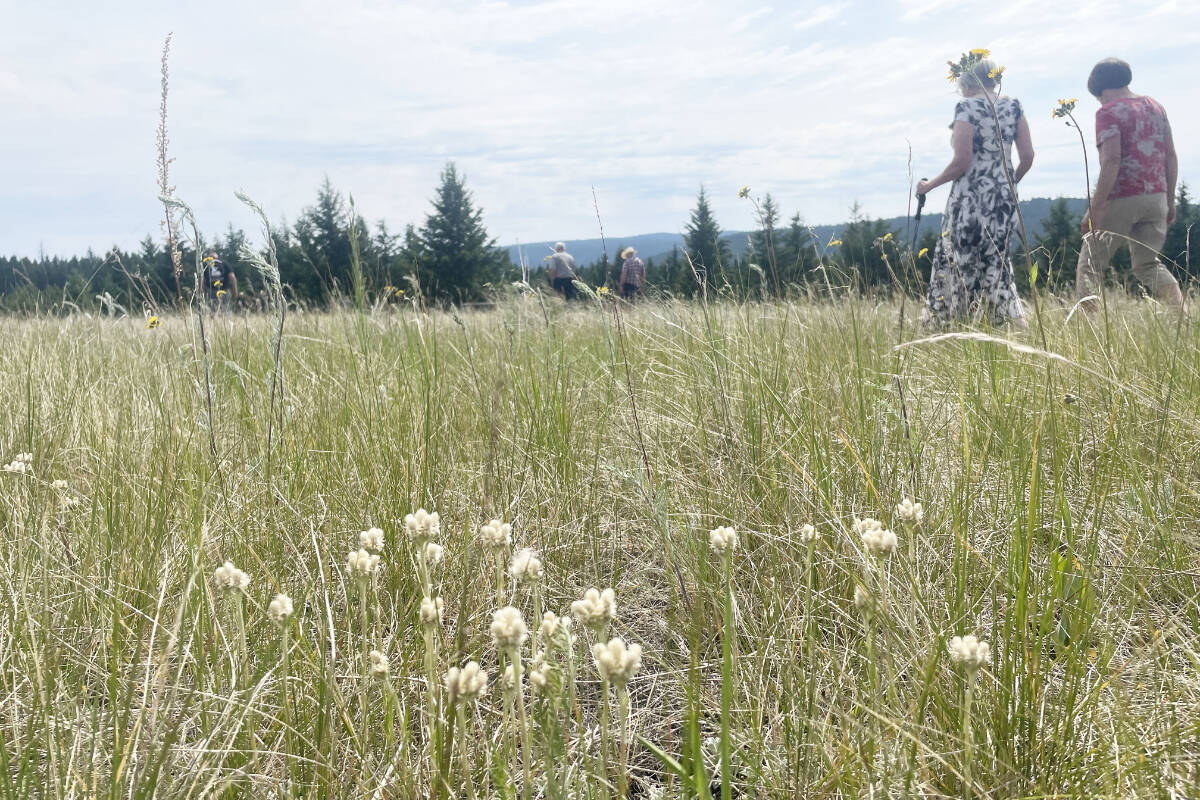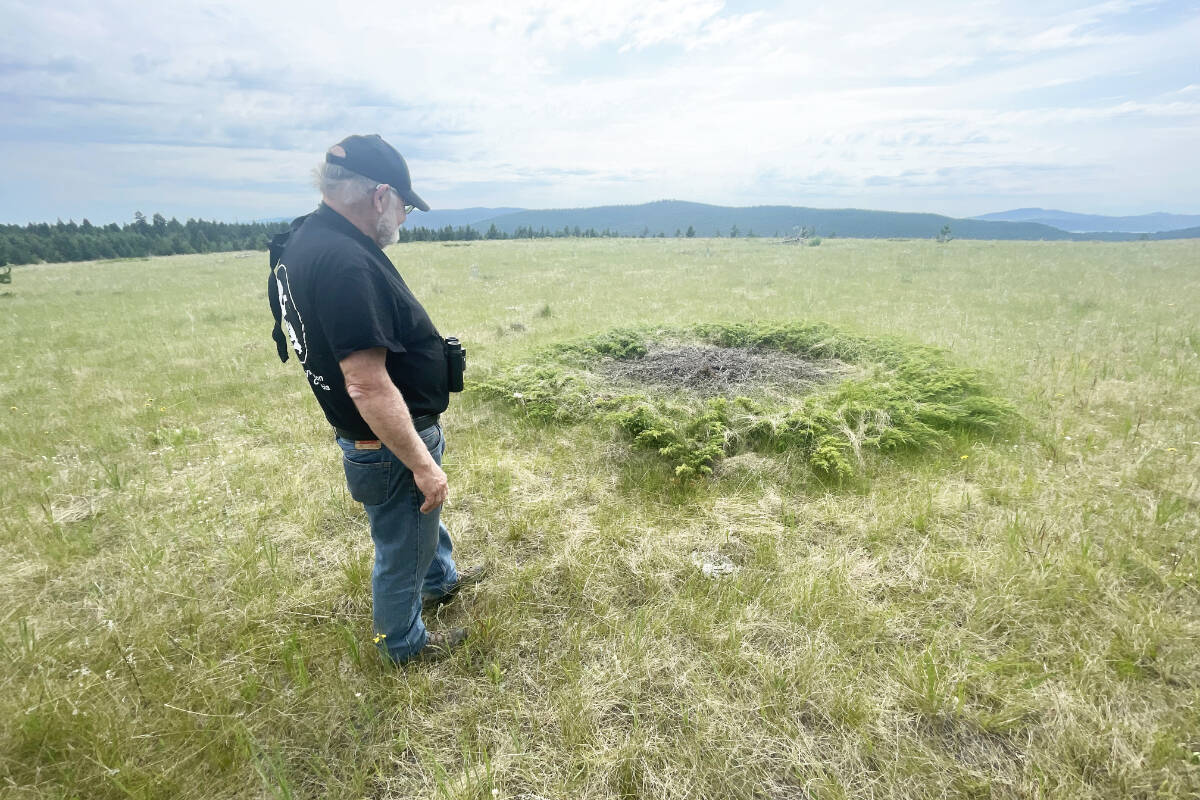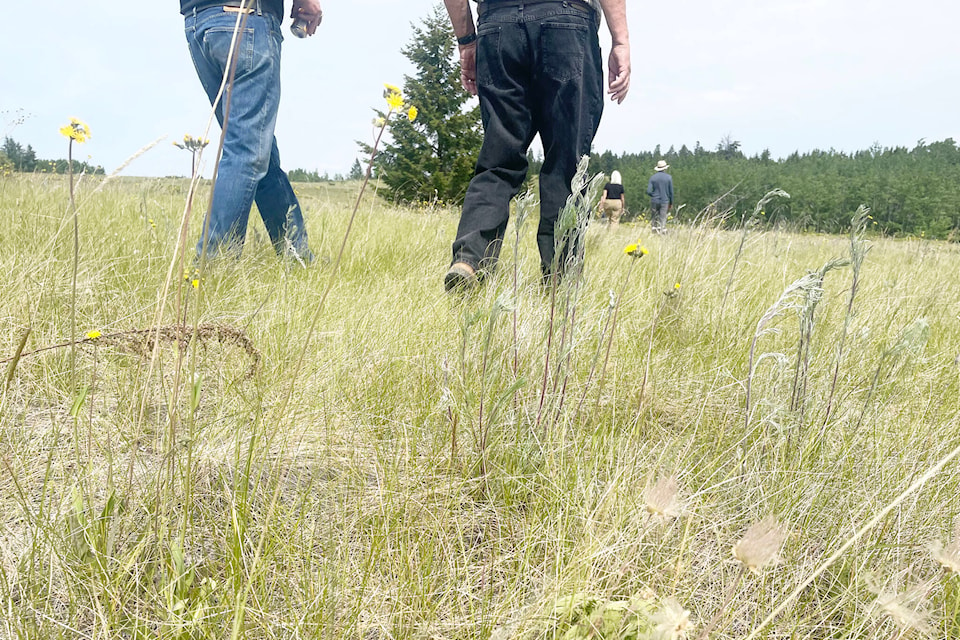On a warm spring day in June, a line of vehicles drove down a dusty road on the Chilcotin Plateau. The vehicles were filled with a group of people en route to look at and discuss grasslands.
The group was organized by the Grasslands Conservation Council (GCC), and they were going on a tour near Riske Creek, not far off of Highway 20.
They were there to look at the grasslands and hear about carbon sequestration, and how this habitat could provide benefits in the face of increasing wildfires and climate change.
Researcher Lila DeLury, a Prince George rangelands practices specialist with the Ministry of Forests, was explaining to the group her work researching the carbon stored in these grasslands.
Grasslands are an often overlooked and undervalued ecosystem, one which due to their open nature and rolling geography have often been areas which are easily developed and therefore lost as productive ecosystems. This geography is also why even though they make up only one percent of B.C.’s land area, they are often featured in tourism photos -they provide some of the best views.
Yet those ecosystems are critically important for a number of reasons.
Though grasslands only now make up a tiny fraction of the province’s area, they are also home to more than 30 per cent of the species at risk in B.C.
American badgers, burrowing owls, western rattlesnakes and big-horned sheep are just a few of the species reliant on this unique habitat.
Many of the plants native to grasslands could also be helpful as increasing temperatures and drought conditions along with increased frequency and intensity of wildfires impact the province.
Grassland plants are often well-adapted to drought, fire and grazing. Many of these deep-rooted plants help prevent flooding and erosion and even help build the soil.
Bluebunch wheatgrass, arrow-leaved balsam root, prickly pear cactus and big sagebrush are all plants of the grasslands which need very little water and are resilient to fire on the landscape.
Not only are grasslands hardy in the face of some of the impacts of climate change, but they are also able to produce food while still maintaining their native plant communities.
With proper grazing practices, food can be grown on intact grassland ecosystems, which provides economic benefit while still maintaining biodiversity.
Now, it is also becoming more clear that in the face of increased wildfires, grasslands might also have an even more important role to play in carbon sequestration. This critical piece means when looking for carbon offsets, government and companies may need to look beyond just focusing on planting trees, but instead also consider the importance of preserving areas of grassland and work on also preventing the encroachment of trees and loss of bunchgrass communities.
The structure of the plants in native grasslands includes root systems which extend far below the ground. These root systems are often larger in size than the plant above the surface. When wildfire moves across a grassland burning the plants on the surface, it is therefore less of a contribution to increased carbon released into the atmosphere.
When the grassland burns, carbon is released, but it is much less than would be released from a dense forest. In addition, the long-term impact is also less, as the grass regenerates in the spring.
The GCC was established in 1999 as a response to increased loss of grassland ecosystems in the province caused by a number of factors including urban sprawl, unmanaged recreation, invasive species, poorly planned developments and inappropriate grazing.
Grasslands were being fragmented and lost, disrupting natural cycles, threatening the last of the province’s native grassland habitats. Unfortunately, these issues still exist today.
While in the south of the province development poses the largest threat to critical grassland habitat, in the Cariboo-Chilcotin, these areas are more often under threat through encroachment by surrounding forests or by invasive species, often spread through forestry or fire suppression activities.
As previous cycles of fire have been removed from the landscape, trees have grown up and filled in many areas which were historically grassland. Heavy equipment use in industrial activities and fire suppression lead to soil disturbance and opportunities for the spread of invasive species.
The GCC helps bring the varied stakeholders together to collaborate and help support the sustainable use and protection of grasslands. Their work to study and protect grasslands includes promoting responsible recreation, invasive plant education and control, promoting proper grazing, and supporting grassland research with educational institutions and highlighting the importance of sequestering carbon.
To find out more, go to: bcgrasslands.org
READ MORE: Controlled burn within Williams Lake could be a model for province
READ MORE: RANCH MUSINGS: Climate and forage, a serious challenge and endeavor
Do you have a comment about this story? email:
ruth.lloyd@wltribune.com
Like us on Facebook and follow us on Twitter.
